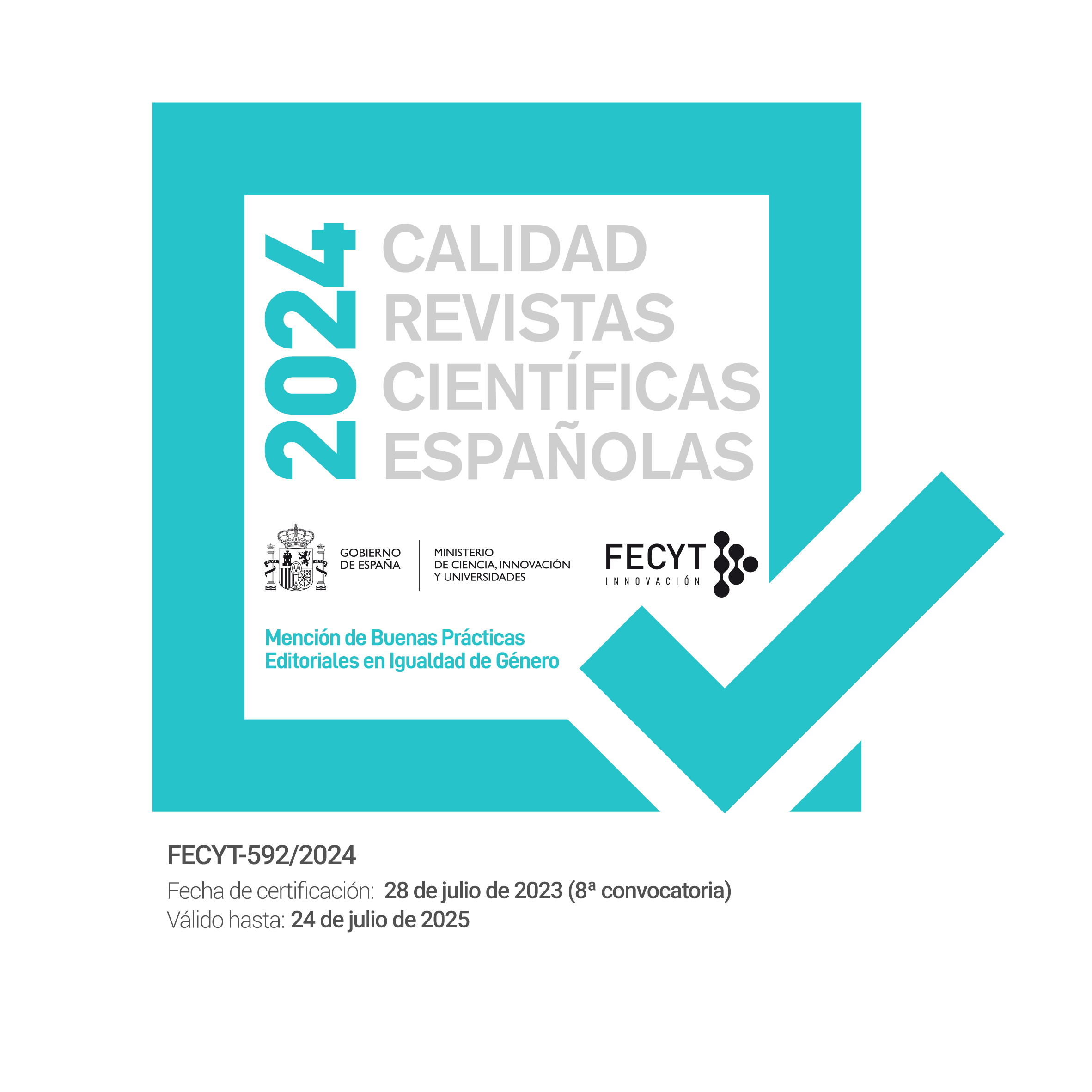Violence against women: law and its limits
Abstract
This article considers the power and limits of law to address violence against women in semi-liberal, rapidly modernizing, and highly unequal «BRICS and beyond» regimes. While rights optimists laud law’s power to establish norms and accountability, feminist critics decry inherent gender bias and inappropriate diffusion. To advance the debate, I argue that the balance will depend on specific features of law: architecture, access, and enforcement. The essay traces the influence of these barriers to gender justice in a series of cases, and suggests that mobilization to transform or supplement these features of law is the most constructive response.
Received: 25 July 2016
Accepted: 30 November 2016
Published online: 11 December 2017
Downloads
References
Alami, Aida. 2014. “A Loophole for Rapists Is Eliminated in Morocco.” In New York Times.
Amnesty International. 2008. The Law is There, Let’s Use It: Ending Domestic Violence in Venezuela. London: Amnesty International.
_____. 2010. Too Late, Too Litte: The Failure of Law Reform for Women in Swaziland. London: Amnesty International
Artz, Lillian, and Dee Smythe. 2008. Should we consent? : rape law reform in South Africa. Cape Town: Juta.
BBC. 2016. “India Outrage After Gang Rape Victim Assaulted Again “By Same Men”.” BBC.
Begum, Rothna. 2015. “Gulf States Fail to Protect Domestic Workers from Serious Abuse.” In Newsweek.
Boesten, Jelke. 2010. “Analyzing Rape Regimes at the Interface of War and Peace in Peru”. The International Journal of Transitional Justice 4:110-29.
Bose, Christine E. 2015. “Patterns of Global Gender Inequalities and Regional Gender Regimes”. Gender & Society, 29 (6):24.
Brysk, Alison. Violence Against Women: Human Rights and the Dynamics of Change [under review].
Brysk, Alison, and Gershon Shafir. 2004. People out of place : globalization, human rights, and the citizenship gap. New York: Routledge.
Charlesworth, Hilary. 2002. “International Law: A Discipline of Crisis”. Modern Law Review, 65:15.
Colombia, ABColombia/ Corporacion Sisma Mujer/ The U.S. Office on. “Colombia: Women, Conflict-Related Sexual Violence and the Peace Process.” http://reliefweb.int/sites/reliefweb.int/files/resources/ABColombia_Conflict_related_sexual_violence_report.pdf.
Connell, R. W. 2002. Gender. Cambridge, UK; Malden, MA: Polity ; Blackwell Publishers.
Data Popular, and Instituto Patricia Galvao. Percepcao Da Sociedade Sobre Violencia e Assassinatos de Mulheres.
De Silva de Alwis, Rangita, and Jeni Klugman. 2015. “Freedom from Violence and the Law: A Global Perspective.” In.: FXBCenter for Health and Human Rights. “A Deeper Look at Violence Against Women (VAW): The Philippine Case.” 2016. Accessed 30 Sept. http://www.monitor.upeace.org/pdf/Violence%20Against%20Women%20in%20the%20Philippines.pdf.
Edwards, Alice. 2010. “Everyday Rape: International Human Rights Law and Violence Against Women in Peacetime.” In Rethinking Rape Law: International and Comparative Perspectives, edited by Clare McGlynn and Vanessa Munro, 92-108. New York: Routledge.
_____. 2011. Violence against women under international human rights law. Cambridge; New York: Cambridge University Press.
Frank, David John, Kassia Wosick-Correa, and Tara Hardinge. 2009. “The Global Dimensions of Rape-Law Reform: A Cross-National Study of Policy Outcomes”. American Sociological Review, 74 (April):18.
Gangoli, Geetanjali, and Nicole Westmarland. 2011. International approaches to rape. Bristol, UK; Portland, OR: Policy Press.
Ghosh, Biswajit, and Tanima Choudhurti. 2011. “Legal Protection Against Domestic Violence in India: Scope and Limitations,” Journal of Family Violence 26:11.
Goel, Rashmi. 2015. “Coaxing Culture: India’s Legislative Response to Dowry Deaths.” In Comparative Perspectives on Gender Violence, edited by Rashmi Goel and Leigh Goodmark. New York: Oxford University Press.
Goodale, Mark, and Sally Engle Merry. 2007. The practice of human rights: tracking law between the global and the local. Cambridge; New York: Cambridge University Press.
Grupo de Memoria Historica de la Comision Nacional de Reparacion y Reconciliacion. 2011. “Mujeres Que Hacen Historia: Tierra, Curope y Política en el Caribe Colombiano”. Bogota, Colombia: Comision Nacional de Reparacion y Reconciliacion.
Higgins, Tracy E., Jeanmarie Fenrich, and Ziona Tanzer. 2006. “Gender Equality and Customary Marriage: Bargaining in the Shadow of Post-Apartheid Legal Pluralism”. Fordham International Law Journal 30 (6): 58.
Human Rights Watch. 2015. “Unequal and Unprotected: Women’s Rights under Lebanese Personal Status Laws.”
Institute, Avon. 2011. Perceptions of Domestic Violence Against Women in Brazil. In.
Jewkes, Rachel, Nicola Christofides, Lisa Vetten, Ruxana Jina, Romi Sigsworth, and Lizle Loots. 2009. “Medico-Legal Findings, Legal Case Progression, and Outcomes in South African Rape Cases: Retrospective Review,” PLoS Med 6 (10).
Koskenniemi, Martti. 2007. “Constitutionalism as Mindset: Reflection on Kantian Theories of International Law and Globalization”. Theoretical Inquiries in Law, 8 (1): 28.
Krauze, Leon. 2016. Los Porkys: The Sexual-Assualt Case That’s Shaking Mexico. In The New Yorker.
Langer, Rosanna L. 2007. Defining rights and wrongs: bureaucracy, human rights, and public accountability. Vancouver: UBC Press.
Le Clerq Ortega, Juan Antonio, and Gerardo Rodriquesz Sanchez Lara. 2015. “Global Impunity Index 2015.” In, edited by Juan Antonio Le Clerq Ortega and Gerardo Rodriquez Sanches Lara. Universidad de las Americas Puebla Consejo Ciudadano de Seguridad y Justicia.
Merry, Sally Engle. 2006. Human rights and gender violence: translating international law into local justice. Chicago: University of Chicago Press.
Meyersfield, Bonita. 2010. Domestic Violence and International Law. Oxford: Hart Publishing.
Mibenge, Chiseche Salome. 2013. Sex and international tribunals: the erasure of gender from the war narrative. Philadelphia: University of Pennsylvania Press.
Mkhwanazi, Siyabonga. “SAPS shake-up Seen as Crime-Fighting Setback.” http://www.iol.co.za/news/south-africa/saps-shake-up-seen-as-crime-fighting-setback-1.277639#.UnJFWrEaLIU.
Nayak, Meghana. 2015. Who is worthy of protection?: gender-based asylum and US immigration politics.
Ndulo, Muna. 2011. “African Customary Law, Customs, and Women’s Rights”. Indiana Journal of Global Legal Studies, 18 (1): 35.
Ortiz-Barreda, Gaby, and Carmen Vives-Cases. 2013. “Legislation on violence against women: overview of key components”. Revista Panamericana de Salud Pública 33: 61-72.
Parashar, Archana. 2008. “Gender Inequality and Religious Personal Laws in India”. Brown Journal of World Affairs 14 (2): 10.
Pearce, Megan Louise. 2015. “Gendering the Compliance Agenda: Feminism, Human Rights, and Violence Against Women”. Cardozo Journal of Law & Gender 21 (2): 49.
Reynolds, Louis. 2014. “Femicide courts in Guatemala: a Becon of Light in the Fight Against Impunity” In Upside Down World.
Richards, David L., and Jillienne Haglund. 2015. Violence against women and the law. New York: Routledge.
Rodríguez Garavito, César A., and Boaventura de Sousa Santos. 2005. Law and globalization from below : towards a cosmopolitan legality. Cambridge, UK; New York: Cambridge University Press.
Roychowdhury, Poulami. 2015. “Victims to Saviors: Governmentality and the Regendering of Citizenship in India.” Gender & Society 29 (6): 24.
Runge, Robin. 2015. “Operating in a Narrow Space to Effect Change: Development of a Legal System Response to Domestic Violence in China.” In Comparative Perspectives on Gender Violence, edited by Rashmi Goel and Leigh Goodmark. New York: Oxford University Press.
Savery, Lynn. 2007. Engendering the state: the international diffusion of women’s human rights. New York: Routledge.
Simmons, Beth A. 2009. Mobilizing for human rights: international law in domestic politics. Cambridge [U.K.]; New York, N.Y.: Cambridge University Press.
Slaughter, Anne-Marie. 2005. A new world order / Anne-Marie Slaughter. Princeton: Princeton University Press.
Smulovitz, Catalina. 2015. “Legal Inequality and Federalism: Domestic Violence Laws in the Argentine Provinces”. Latin American Politics and Society 57 (3): 26.
Smythe, Dee, and Samantha Waterhouse. 2008 “Policing Sexual Offenses: Policies, Practices and Potential Pitfalls.” In Should We Consent? Rape Law Reform in South Africa, edited by Lillian Artz and Dee Smythe, 198-223. Capetown: Juta and Co.
Teitel, Ruti G. 2000. Transitional justice. Oxford; New York: Oxford University Press.
The Protection Project and Johns Hopkins. 2013. “100 Best Practices in the Protection of Migrant Workers.” In.: Paul H. Nitze School of Advance International Studies.
U.S. Department of State. “2014 Trafficking in Persons Report: Philippines.” http://www.state.gov/j/tip/rls/tiprpt/countries/2014/226799.htm.
US State Department. 2013. “The 2013 US State Department Human Rights Report.” In.
Vetten, Lisa. 2011. “Paradox and Policy: Address Rape in Post-Apartheid South Africa.” In International Approaches to Rape, edited by Nicole Westmarland and Geetanjali Gangoli. Chicago: University of Chicago Press.
“W.C. Police Rape Stats Highest in S.A.”. http://ewn.co.za/2013/09/06/Cape-cop-rape-stats-alarming.
Wasielfisz, Julio Jacobo. 2012. “Mapa da Violencia 2012: Atualizacao Homocidio de Mulheres No Brasil.” In, edited by Maragareth Doher and FLASCO Brazil. FLASCO Brasil Centro Brasileiro de Estudos Latino-Americanos.
Women, UN. 2016. “Maria da Penha Law: A Name that Changed Society.” Accessed 30 Sept. http://www.unwomen.org/en/news/stories/2011/8/maria-da-penha-law-a-name-that-changed-society.
Deusto Journal of Human Rights / Revista Deusto de Derechos Humanos is an Open Access journal; which means that it is free for full and immediate access, reading, search, download, distribution, and reuse in any medium only for non-commercial purposes and in accordance with any applicable copyright legislation, without prior permission from the copyright holder (University of Deusto) or the author; provided the original work and publication source are properly cited (Issue number, year, pages and DOI if applicable) and any changes to the original are clearly indicated. Any other use of its content in any medium or format, now known or developed in the future, requires prior written permission of the copyright holder.



3.jpg)
3.jpg)
3.jpg)
.jpg)








